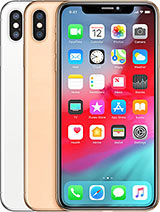Sony MDR-MV1 headphones review
The MDR-MV1 are Sony's newest studio mixing and monitoring headphones. They could be considered the spiritual successors to the legendary MDR-7506, which have been around for over 32 years and are still on sale.

Unlike previous Sony headphones meant for studio use, the MV1 are open-back headphones. Sony intends these to be used more specifically for mastering spatial audio, which is becoming increasingly popular these days with the advent of Dolby Atmos (and less so because of Sony's own 360 Reality Audio).
In this review, I will be checking if the MV1 are fit for their intended purpose and how they perform for other tasks, such as listening to music and playing games.
Design
The MV1 have a fairly standard, unassuming design in all-black. The metal earcups have mesh all over, making the entire back porous. The plastic yokes connect to the headband that adjusts with a simple sliding mechanism. The mechanism is smooth and there are markings so you can get them even on both sides and make a note for different users.

The headband has a leather-like material on the top with stitching around the edges. The underside has soft foam padding that is mostly concentrated around the middle of the headband and doesn't go all the way up to the ends.
The earcups have massive foam pads with a soft velour-like texture. The earpads have a depth of 2cm before your ears touch the cloth grille on the inside and then another 0.5cm before they touch the hard plastic grill. The earpads are removable but as far as I'm aware Sony does not sell replacements. Getting new pads when these inevitably flatten out and change the sound profile is going to be difficult and once again you may have to rely on aftermarket sellers.

The headphones have a single-sided connection on the left earcup. By default, the MV1 come with a single long 2.5m cable with a 3.5mm connector on one end and a 6.3mm connector on the other end. The smaller one plugs into the headphones and there is also a screw mechanism that secures it in place. You also get an adapter that converts the 6.3mm plug to 3.5mm.
The quality of the cable is great and the use of metal for the connector ends on both sides feels fantastic. However, I would have preferred if there were two cables in the box, the longer 2.5m cable with the 6.3mm end and a shorter 1m cable with a 3.5mm end, something many other cheaper headphones come with. The supplied adapter is also needlessly bulky and heavy enough to drag your phone if you happen to plug it into one.

The overall build quality of the headphones is good. Sony headphones have a tendency to not feel particularly premium at first but end up outlasting their owners. I have no doubt the MV1 will also age well unless you are especially abusive.
The headphones are also very comfortable. The pads are cushy and have great depth to them that most people should find accommodating. They are also not too heavy and have just the right amount of clamping force. I wore them for hours playing games and felt no discomfort or fatigue.
Being meant for studio use, the MV1 don't come with a lot of accessories in the box. The box itself is simple and inside are the aforementioned cable and adapter along with the headphones.
Performance
The notion of open-back studio headphones for mixing and mastering instead of just monitoring is somewhat intriguing. If you ask studio engineers, they will tell you the only time headphones are used in studios is for monitoring the performers or as a secondary source for checking for issues in the mix. There is almost no actual mixing or mastering happening with headphones, let alone open-back ones, as that is solely the domain of studio monitors, a.k.a. speakers.
I will get back to that but first, let's talk about the sound. The MV1 do not sound like what I expect studio mixing and mastering headphones to sound. Sony claims the sound is "neutral", "accurate", and "uncolored" but it is none of those things.

First of all, the sound is relatively bassy. The MV1 have a fairly wide-band bass boost in the mid and upper bass frequencies. It's not enough to call the headphones bass-heavy but there is just enough additional energy in these regions that the sound is consistently warm and rumbly. Being an open back design, there isn't much low bass energy so there isn't a deeper thump accompanying the rumble, which feels a bit unsatisfying if you are simply listening to music and not monitoring. If you are monitoring you may be wondering why there is so much mid-bass at all and if you messed up somehow while mixing.
The mid-range is also a bit all over the place. The lower mids are colored by the upper bass energy spilling over, giving deeper vocals further depth and warmth not present in the mix.
Unfortunately, the upper mids disappoint the most. The MV1 are quite lacking in the upper mid-range territory, which makes the sound a bit dull, like an image that is just out of focus. It coats all vocals with a layer of mush and, coupled with the bassy lower mids, just sounds dark and murky.

The treble performance is decent in isolation. The upper treble can be a bit bright at times but overall the treble performance is surefooted and satisfying with good extension and reproduction. Unfortunately, the suppressed upper mids can cause the treble to sound more spiky than it is (a trough before a peak further highlights the peak), which puts more focus on the upper treble. This, coupled with the bass, can actually give the sound a slight v-shaped leaning.
I'm sure Sony has a reason to tune the sound this way but I can't figure out what it is. Dubbing this as 'headphones for mixing and mastering' is just odd as that's not something headphones are usually used for in studio environment. The specific mention of spatial audio is also weird since you don't master spatial content on headphones as the sound will turn with your head, making any kind of mastering pointless. Their open back nature also makes them ill-suited for monitoring in a sound booth. You could use them for monitoring after the mixing and mastering is done but they are not super detailed or revealing enough for that.

So they are not suitable for use in a studio but how about just listening to music? Here, the MV1 don't fare too bad. I wasn't particularly fond of the bass dropping off as it went further down the frequency range and the lack of upper mid-range clarity continued to grind my gears. Still, for the most part, the MV1 are enjoyable when purely being used for listening to music for the joy of it.
However, the best use I got out of the MV1 was for gaming. Thanks to the spacious soundstage and great imaging qualities, the MV1 are rather nice when it comes to gaming. As someone who plays for several hours every day, the comfort, accurate audio positioning, and relatively balanced sound compared to "gaming" headsets made these excellent for gaming. The only thing missing is a microphone.
The MV1 are very easy-to-drive headphones. You can essentially power them with anything and still get ample volume. Even with a basic Shanling UA2, the MV1 would get very loud at around 50% volume. A desktop amplifier would be nice as it means you wouldn't need to use the clunky adapter but isn't necessary.
Competition
There is no shortage of competition in the headphone space. For studio use, Beyerdynamic headphones have long been the benchmark. The closed-back options like DT 770 Pro are good for talent monitoring and the open-back DT 990 Pro are good for monitoring post-mixing to look for flaws. Their bright, almost harsh tuning makes them ideal for this purpose.

For listening to music, the HiFiMan Sundara, often considered one of the best pair of headphones you can buy, are better sounding. If you are on a budget, then the HE400se is a terrific option. For gaming, the Sennheiser x Drop PC38X is a great option and if you don't want a mic just get the 560s. And yes, all of these are cheaper than the MV1.
However, depending on where you live, you may get the MV1 for a lot less than their US price. In India, for example, the headphones are currently priced at INR 24,990, which is exactly $300. That's still more expensive than the aforementioned competition but not nearly as much as it is in the US.
Conclusion
At $400, the Sony MDR-MV1 are somewhat pricey pair of headphones. I think Sony has missed the mark on the 'studio mixing and mastering headphones' angle with a strangely colored, v-shaped tuning. They are good for listening to music and even better for gaming but hard to recommend for those use cases at the current price when there are cheaper and better alternatives available. But if you somehow manage to get them for $250 or less then they are definitely worth considering.
Related
Reader comments
- Distorted Rec.
- 29 Oct 2023
- iGf
I solely disagree with your notion that there is no mixing ore mastering done on headphones you are completely wrong there are many professionals that do all the work on headphones exclusively , I have tried these headphones and they do have the Son...
- NeonHD
- 13 Oct 2023
- 6Fi
> "which means it will sound the same" Incorrect. It will sound louder (obviously). Besides, how would you do a volume-matched blind test if the AMPless set is too quiet to even meet an SPL satisfactory for music listening? Thi...
- NeonHD
- 13 Oct 2023
- 6Fi
> "but that is not why one AMP is better than other" I was never arguing that in the first place. You said it yourself, some headphones react differently to output impedance, and that's exactly what it is. Yes you're...








 Samsung
Samsung Infinix
Infinix Apple
Apple Apple
Apple Xiaomi
Xiaomi


